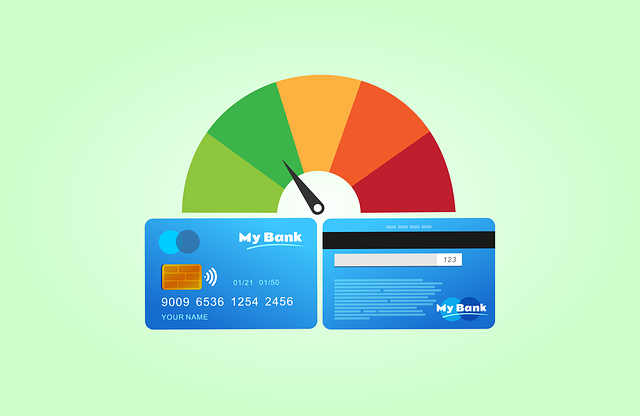Understanding different working capital loan types (short-term, lines of credit, term loans) is crucial for businesses. These loans offer quick access to funds for operational needs, with flexible terms and competitive rates. Key considerations include business performance, financial projections, and clear repayment plans. Researching and comparing interest rates, industry standards, and lender terms ensures the best fit for unique requirements, enhancing cash flow management and growth prospects. A solid application highlights loan benefits, meets requirements, and secures favorable terms.
Looking to boost your business with a working capital loan? This comprehensive guide breaks down everything you need to know. From understanding the various loan types and their benefits to navigating strict requirements and deciphering interest rates, we’ll equip you with the insights to make an informed decision. By following our step-by-step application process, you’ll be well on your way to securing the capital needed for growth. Discover how working capital loans can fuel your business’s success.
- Understanding the Types of Working Capital Loans
- Working Capital Loan Benefits and How They Can Boost Your Business
- Unraveling the Requirements for Securing a Working Capital Loan
- Deciphering Working Capital Loan Interest Rates: What to Expect
- Optimizing Your Chances: A Step-by-Step Guide to Applying for a Working Capital Loan
Understanding the Types of Working Capital Loans

Understanding the types of working capital loans is a crucial first step in your application journey. These loans are designed to provide businesses with immediate financial support, helping them cover short-term expenses and maintain cash flow. They come in various forms, each catering to distinct business needs. Short-term loans, for instance, offer quick access to funds but generally have higher interest rates and shorter repayment periods. Lines of credit, on the other hand, provide a revolving credit facility, allowing businesses to borrow up to a predetermined limit and repay as their cash flow improves. This flexibility makes them ideal for managing seasonal fluctuations or unexpected expenses.
When choosing working capital loans, consider your business’s specific requirements and financial health. Lenders will evaluate your company’s revenue, cash flow management, and ability to repay the loan. Meeting these basic requirements enhances your chances of securing a favourable interest rate and terms. Keep in mind that a solid business plan and financial projections can also strengthen your application, as they demonstrate your commitment and potential for growth.
Working Capital Loan Benefits and How They Can Boost Your Business

Working capital loans are a powerful tool for businesses looking to enhance their cash flow and overall growth. By understanding the various types available, such as short-term loans, lines of credit, or term loans, entrepreneurs can tap into this financial support when it’s most needed. These loans offer numerous benefits that directly impact a company’s operations and future prospects. One of the key advantages is improved liquidity, allowing businesses to cover immediate expenses, seize market opportunities, or manage unexpected cash flow gaps without disruptions.
Furthermore, working capital loans often come with flexible repayment terms, catering to different business cycles and needs. This means companies can focus on their core activities while managing debt responsibly. The interest rates on these loans are typically competitive, especially when compared to other short-term financing options, making them an attractive choice for businesses seeking a quick financial boost. When applying for working capital loans, understanding the requirements, including business performance, credit history, and clear repayment plans, is essential. Choosing the right loan type based on these factors ensures that the funds are utilized effectively, boosting the business’s prospects and fostering long-term success.
Unraveling the Requirements for Securing a Working Capital Loan

Understanding the types of working capital loans is crucial before applying. These loans are designed to provide businesses with short-term funding to cover operational expenses, inventory purchases, or cash flow gaps. They come in various forms, such as line of credit, term loans, or accounts receivable financing, each catering to different business needs and structures. By evaluating your requirements and exploring these options, you can determine the most suitable working capital loan type for your situation.
When it comes to choosing a working capital loan, understanding the requirements is essential. Lenders will assess factors like credit history, revenue projections, cash flow statements, and collateral. A strong business plan and clear financial disclosures will enhance your application’s success. Additionally, paying attention to interest rates and repayment terms ensures you get favorable conditions tailored to your business’s health and goals. A well-prepared working capital loan application can open doors to accessing the benefits of this financing option, including improved cash flow management and business growth opportunities.
Deciphering Working Capital Loan Interest Rates: What to Expect

When considering a working capital loan, understanding working capital loan interest rates is crucial to making an informed decision. These rates vary depending on several factors, including your business’s creditworthiness, industry standards, and the specific lender. Unlike fixed-rate loans where the cost of borrowing stays constant, variable rates fluctuate with market conditions. This means your monthly payments could increase or decrease over time.
Before applying, research typical working capital loan interest rates within your industry. Lenders often provide this information openly to attract borrowers. Compare offers from different lenders, keeping in mind that lower rates aren’t always better; transparent terms and flexible repayment options are also vital. Remember, a well-chosen working capital loan should offer benefits like quick access to funds, minimal documentation, and tailored repayment plans, while adhering to your business’s requirements.
Optimizing Your Chances: A Step-by-Step Guide to Applying for a Working Capital Loan

Understanding the types of working capital loans is the first step in optimizing your chances of securing a suitable option for your business needs. There are various types available, each designed to cater to different stages and sizes of businesses. For instance, short-term working capital loans offer quick access to funds but may have higher interest rates, while long-term options provide more favorable rates with extended repayment periods. Some lenders specialize in offering lines of credit, allowing business owners to borrow as needed, whereas others provide term loans with fixed repayment schedules.
When applying for a working capital loan, clearly articulating the benefits to the lender is key. Demonstrate how the funds will improve your cash flow, enable growth, or help manage unexpected expenses. Ensure you meet the basic requirements, such as having a stable business history and providing accurate financial statements. Additionally, comparing interest rates and terms from multiple lenders can significantly impact the overall cost of borrowing. A thorough understanding of your business’s financial landscape will empower you to choose the best working capital loan that aligns with your goals.






